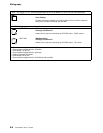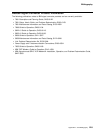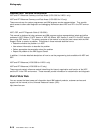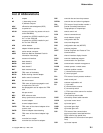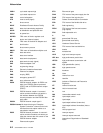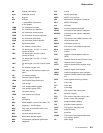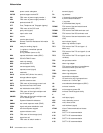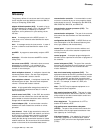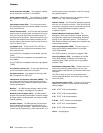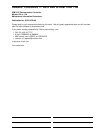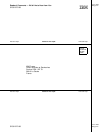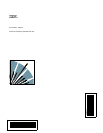Glossary
initial microcode load (IML). The process of loading
the microcode into a scanner or into MOSS.
initial program load (IPL). The initialization procedure
that causes 3745 control program to commence opera-
tion.
input/output control (IOC). The circuit that controls
the input/output from/to the channel adapters and scan-
ners via the IOC bus.
internal clock function. A LIC function that provides a
transmit clock for sending data, and retrieves a receive
clock from received data, when the modem does not
provide those timing signals. When the terminal is con-
nected in direct-attach mode (without modem) the ICF
also provides the transmit and receive clocks to the ter-
minal, via the LIC card.
line adapter (LA). The part of the TSS, HPTSS, or
TRSS that scans and controls the transmission lines.
Also called
scanner
.
For the TSS the line adapters are low-speed scanners
(LSSs).
For the HPTSS the line adapters are high-speed scan-
ners (HSSs).
For the TRSS the line adapters are token-ring adapters
(TRAs).
line interface coupler (LIC). A circuit that attaches up
to four transmission cables to the controller.
low-speed scanner. Line adapter for lines up to 256
kbps, composed of a CSC card.
maintenance and operator subsystem (MOSS). The
part of the controller that provides operating and ser-
vicing facilities to the customer's operator and the IBM
service representative.
NetView. An IBM licensed program used to monitor
a network, manage it, and diagnose its problems.
Network Control Program (NCP). An IBM licensed
program that provides communication controller support
for single-domain, multiple-domain, and interconnected
network capability.
operator console. The IBM Operator Console that is
used to operate and service the communication con-
troller (CC) through the MOSS. Optionally an alternate
console may be installed up to 120 m from the CC, or a
remote console may be connected to the (CC) through
the switched network.
scanner. A device that scans and controls the trans-
mission lines. Also called
line adapter
.
selector channel. An I/O channel designed to operate
with only one I/O device at a time. Once the I/O device
is selected, a complete record is transferred one byte at
a time. Contrast with
block multiplexer channel,
multiplexer channel
.
Systems Network Architecture (SNA). The
description of the logical structure, formats, protocols,
and operational sequences for transmitting information
through a user application network. The structure of
SNA allows the users to be independent of specific tele-
communication facilities.
token-ring subsystem (TRSS). The part of the con-
troller that controls the data transfers over an IBM
Token-Ring Network.
The TRSS consists of one token-ring adapter (TRA).
token-ring adapter (TRA). Line adapter for an IBM
Token-Ring Network, composed of one token-ring
multiplexer card (TRM), and two token-ring interface
couplers (TICs).
transmission subsystem (TSS). The part of the con-
troller that controls the data transfers over low- and
medium-speed, switched and non switched transmission
interfaces.
The TSS consists of up to six low-speed scanners
(LSSs) associated with the LICs units (LIUs), through
serial links (SLs).
two-processor switch (TPS). A feature of the channel
adapter that connects a second channel to the same
channel adapter.
V.24. CCITT V.24 recommendation
V.25. CCITT V.25 recommendation
V.35. CCITT V.35 recommendation
X.20 bis. CCITT X.20 bis recommendation
X.21. CCITT X.21 recommendation
X.25. CCITT X.25 recommendation
YZxxx.. wiring diagram
X-8 3745 Models 130 to 17A: MIP



